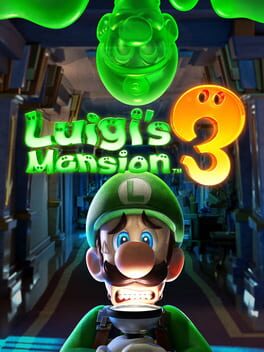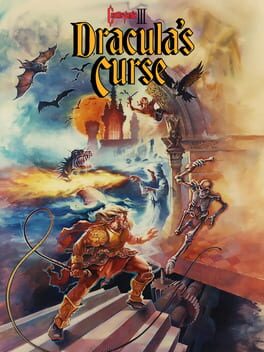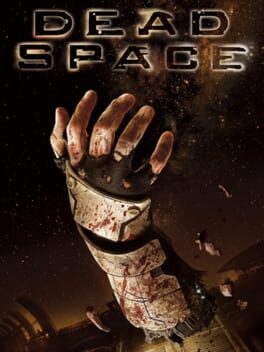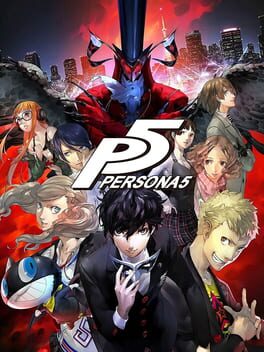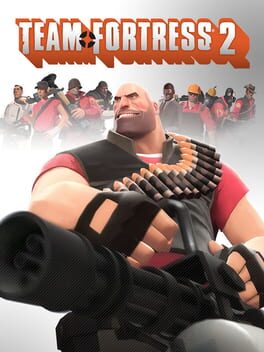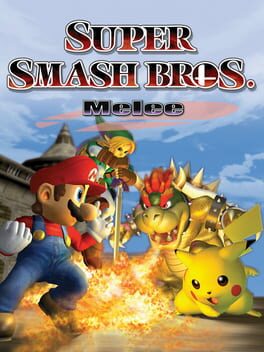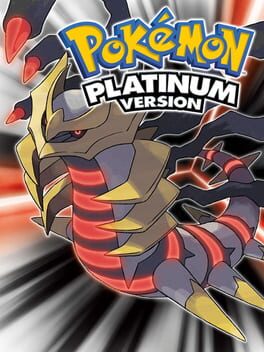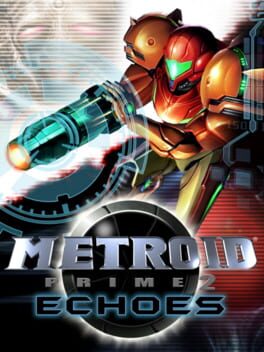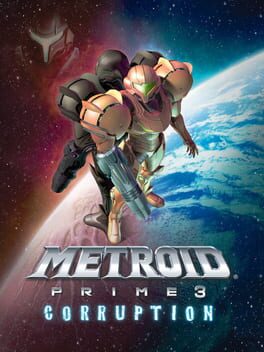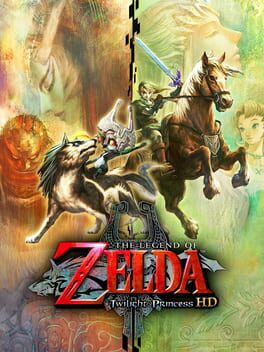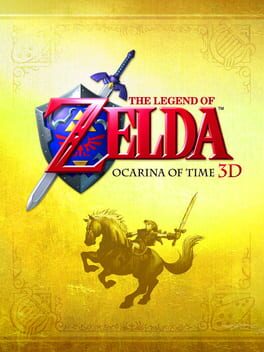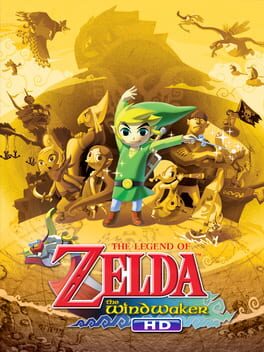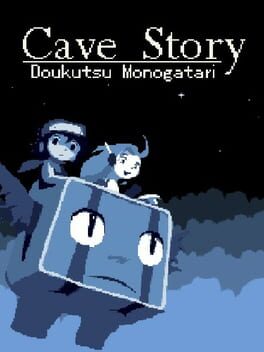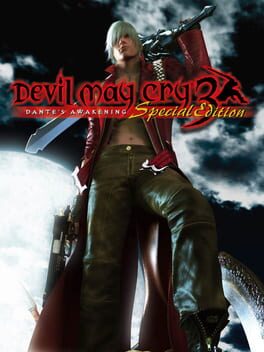Castle
66 reviews liked by Castle
Pikmin 4
2023
I’m actually in awe of how much I enjoyed this one. Just an excellent experience from start to finish. The Art of Dandori, as explained by the game, is the ability to effectively plan out a strategy to tackle many objectives as efficiently as possible. This seems like whole ethos of the Pikmin series, and it really did hook me.
I ended up 100% completing the game because effective planning out how to tackle everything with my Pikmin army was just so damn fun.
Might be the year to replay the rest of the series, I have the itch now.
I ended up 100% completing the game because effective planning out how to tackle everything with my Pikmin army was just so damn fun.
Might be the year to replay the rest of the series, I have the itch now.
I don't think I'll ever be fully satisfied with Nintendo's "toybox" design philosophy. It's certainly fun, but it always leaves me a little hollow feeling afterwards. That being said, I would be a fool to not admire just how creatively inspiring Mario Wonder is. A gilded toy chest, filled to bursting with unique ideas.
Donkey Kong Country
1994
Huge thanks to Pangburn for helping me revise and hash this out, alongside being a great source to bounce ideas off of. This review went through several drafts and was easily one of the most challenging write-ups I've ever attempted, and none of this would be possible without his invaluable assistance.
Donkey Kong Country is a shining example of how to create depth through simple yet cohesive design principles, refusing to lose momentum thanks to its constant movement. Throughout its several hour run-time, Rare engages the player with organic challenge by creating a deep learning curve through obstacle escalation, resulting in a tight gameplay loop that demands increasing execution and climaxes with sheer satisfaction. A lot of people thoroughly discuss the (rightfully) praised graphics and soundtrack, but in this review, I’d like to shine a light upon the often underappreciated mechanical and level design.
Donkey Kong Country’s controls are simple, with the basic movement consisting of a tight jump and a roll/cartwheel serving as an attack and a quick burst of speed. The depth comes from successfully mixing rolls alongside jumps, for jump-cancelling the roll not only allows you to maintain horizontal momentum but also jump out of the roll in mid-air to span larger gaps. That said, there’s a catch: coming to the end of the roll animation at any time results in your character abruptly stagnating for a solid second or two, leaving you vulnerable to attack while destroying any momentum you had. However, the ability to barrel into consecutive enemies and chain speed boosts makes this risk very much worth the reward. Thus, learning when to chain bounces off of enemy clusters versus quickly somersaulting into them to speed up the Kongs requires not only good recognition, but also tight execution, and mastering this toolkit remains key to developing player growth and adapting to Donkey Kong Country’s scaling level challenges.
Picture each individual level as a mini-marathon, with their own set of intensity swells. Levels often start out simple, with important level features or gimmicks slowly introduced fairly early on. Then, the difficulty begins to ramp up, with the prominent level features taking up a more active role while punishing more heavily for missed inputs or slow reactions. As the level progresses, these elements intertwine with previously introduced dangers from past levels; these new combinations force further adaptation. Finally, the level comes to its denouement and throws the final gauntlet of variations at you, ending with a quick cooldown section (sometimes with rewards) and perhaps one final “gotcha” moment to seal the deal. This learning curve of slowly picking up the pace and reacting on the fly to increasingly demanding variations upon variations of different obstacles makes the victory lap that much sweeter when you finally break through the crash course, ready to proceed to the next lesson.
As part of this design philosophy, Donkey Kong Country emphasizes usage of moving parts to force specific execution tests; these parts include barrel cannons, swinging ropes, tire swings, and even steel kegs thrown against walls that the Kongs can ride. Furthermore, these passive elements are aided by potentially hazardous obstacles that constantly push players forward and hold them accountable, for stagnation or sloppy inputs will result in quick deaths. For example, Temple Tempest is filled with oversized beavers in millstones that chase you down like a boulder in an Indiana Jones film, while Misty Mines is filled with infinite enemy spawners that threaten to overwhelm you with a flurry of snakes and armadillos. These traversable interactables and constant sources of danger are a fundamental component of the obstacle escalation; they limit your available options and create situations where you must account for and effectively utilize all present elements.
To illustrate the previous points, let’s consider Oil Drum Alley, the first level of Krem Kroc Industries. Oil Drum Alley starts with a simple flaming oil drum atop a gap that’s easily avoided. Inquisitive players may also notice the single banana beneath the drum, implying that there’s a secret to be found. Furthermore, these players can unearth a TNT barrel nearby by recognizing the tells of a dangling rope over a buried object. It then follows that this TNT barrel has some association with the oil drum, and in fact, you’re encouraged to throw the barrel to destroy the oil drum, exposing the secret area below. As such, this single condensed opening segment in Oil Drum Alley both introduces you to the main hazard of the level while providing a hint on how to deal with it.
As you move further through the level, the level begins to test you more and more. First, it starts throwing in enemies between the flaming oil drums such as these leaping Kritters to force you to react to disposing or avoiding these foes. Then, you’re introduced to the first twist of the level after the Continue Barrel: the oil drums can flare on and off. This becomes important because you’re soon forced to use the oil drums as platforms to progress; meanwhile, you also have to now contend with these Lanky Kongs chucking barrels at you. Finally, you reach the climax of the level: platforming on oil drums set on a cycle of two quick burns and an extended burn, over thin air with tire platforms inbetween. As you clear this last segment, you’re met with one final “twist” and reward: the collectible letter “G,” should you choose to unearth it by jumping from the last oil drum.
Admittingly, it would be quite difficult to fit in thirty levels of varied platforming without some degree of repeating elements or compromising in design depth. However, Rare tackles this challenge in two ways. Firstly, Rare is extremely thoughtful at adding subtle wrinkles between similar levels. For example, Forest Frenzy requires players to cling to vertical ropes as an aid to cross vast expanses of abyss while carefully slinking up and down to dodge aerial enemies. However, Slipslide Ride, while also heavily utilizing ropes, plays with this idea by transforming the ropes into the main obstacle. Now, ropes automatically slide the player up or down, and as a result, players must often fight back against the natural flow, jumping to and from various slippery ropes to avoid both falling to their doom and getting spiked at the ceiling. In a similar fashion, Trick Track Trek first introduces the concept of the singular moving platform odyssey, daring the player to survive waves of goons that drop onto the platform from the rafters like a classic elevator defense stage. Conversely, Tanked Up Trouble turns this concept on its head by forcing the player to constantly travel beyond the moving platform, scouring nearby ledges while dodging Zingers to collect fuel cans and keep the platform running, lest it fall out of the sky after exhausting its gas.
Secondly, Rare understands how to cleverly disguise its use of similar elements through theme and interchanging other level assets. A great example here can be found between the second level Ropey Rampage and the Gorilla Glacier stage Ice Age Alley; while both stages heavily rely upon timing jumps between cliffs and swinging ropes, Ice Age Alley innovates upon this by utilizing slippery ice surfaces to punish complacent players while also giving players an opportunity to outright skip the rope swinging if they stumble upon Espresso the Ostrich to flutter over the large gaps. The dynamic set design also plays a huge part in differentiation: weather elements such as rain and snow as well as the changing night/day cycles while progressing through outdoor jungle levels further help sell the varied exotic environments of Kong Island’s wilderness. As such, it’s through these subtle design decisions that each individual level can begin to stand out on its own.
Rare further stratifies its levels by translating these ideas to two different separate settings. The first example comes in the form of two minecart levels. Instead of trekking on the ground, you’re now controlling a constantly moving vehicle in an auto-scroller. At their core, these levels are still classic 2D platforming, just now taking place on rails that require the Kongs to quickly react to hazards in order to precisely time jumps over gaps in the rails as well as various flying foes and overturned minecarts. The second type of variation occurs in the underwater levels, where the players must tap A to doggy paddle (an analog for underwater jumping) while quickly reacting to threats such as pearl spitting clams and whirling Croctopi. Adapting to these levels requires a fundamental understanding that “gravity” and jump limits do not apply in the same manner, and in fact, holding down on the D-pad to quickly descend is just as important as carefully tapping A to maintain your vertical position.
As a final strategy for creating depth within levels, Rare made sure to insert plenty of hidden secrets and surprises as part of the core exploration loop. Scattered around the various levels are tons of bonus areas, often indicated by stray bananas or seemingly out-of-place enemies. They’re usually not too far off the beaten path, as most of these secrets are just a well timed roll-jump or enemy bounce away, or hidden in a nearby breakable wall. These rewards don’t exclusively have to be bonus areas; well-timed execution or careful sleuthing can also result in collecting goodies in the form of animal tokens (for bonus stages to gain even more lives), KONG letters, banana bunches, and extra lives balloons. Even more rarely, this can result in finding shortcuts such as special Warp Barrels to the end of the stage or sequences of automated Barrel Cannons that let you skip difficult cannon timing sections. Having said that, while Rare was able to lay down solid framework for secret discovery, they would greatly improve upon rewards (beyond extra lives and fulfillment) in future iterations.
Despite all my praise, Donkey Kong Country is not perfect; there are aspects that the game fails to imbue with the depth of its standard platforming, such as its boss fights. All of these fights follow the same pattern of attack, dodging while the boss is invincible, attacking again, and repeating (often with a lot of waiting in-between attacks) until the boss is finished. Moreover, two of the bosses (Really Gnawty and Master Necty Snr) are just juiced-up versions of previous bosses (Very Gnawty and Master Necty, respectively) with similar attack patterns. The third boss, Queen B., can be easily dealt with by having Diddy hold the barrel in front of him and waiting for the boss to run into the barrel, and the fifth boss, Dumb Drum, is just a minion rush with plenty of waiting between minion waves. Even the final boss, King K Rool, features plenty of standing around while players wait to dodge the next line of cannonballs. It is a shame that for such an engaging and fine-tuned game, Donkey Kong Country’s bosses unfortunately feel rather un-interactive and one-dimensional.
Regardless, Donkey Kong Country is the epitome of successfully rebooting a beloved franchise and establishing a tough yet fair and fulfilling platforming game loop thanks to its thoughtful obstacle escalation providing an approachable and deep mechanical challenge. While the intimidating learning curve and short run-time may turn off some players, the varied and engaging level designs, distinctive visuals, immersive soundtrack, and high skill ceiling make Donkey Kong Country not just an icon of its era, but also a beloved classic worth revisiting time and time again.
Donkey Kong Country is a shining example of how to create depth through simple yet cohesive design principles, refusing to lose momentum thanks to its constant movement. Throughout its several hour run-time, Rare engages the player with organic challenge by creating a deep learning curve through obstacle escalation, resulting in a tight gameplay loop that demands increasing execution and climaxes with sheer satisfaction. A lot of people thoroughly discuss the (rightfully) praised graphics and soundtrack, but in this review, I’d like to shine a light upon the often underappreciated mechanical and level design.
Donkey Kong Country’s controls are simple, with the basic movement consisting of a tight jump and a roll/cartwheel serving as an attack and a quick burst of speed. The depth comes from successfully mixing rolls alongside jumps, for jump-cancelling the roll not only allows you to maintain horizontal momentum but also jump out of the roll in mid-air to span larger gaps. That said, there’s a catch: coming to the end of the roll animation at any time results in your character abruptly stagnating for a solid second or two, leaving you vulnerable to attack while destroying any momentum you had. However, the ability to barrel into consecutive enemies and chain speed boosts makes this risk very much worth the reward. Thus, learning when to chain bounces off of enemy clusters versus quickly somersaulting into them to speed up the Kongs requires not only good recognition, but also tight execution, and mastering this toolkit remains key to developing player growth and adapting to Donkey Kong Country’s scaling level challenges.
Picture each individual level as a mini-marathon, with their own set of intensity swells. Levels often start out simple, with important level features or gimmicks slowly introduced fairly early on. Then, the difficulty begins to ramp up, with the prominent level features taking up a more active role while punishing more heavily for missed inputs or slow reactions. As the level progresses, these elements intertwine with previously introduced dangers from past levels; these new combinations force further adaptation. Finally, the level comes to its denouement and throws the final gauntlet of variations at you, ending with a quick cooldown section (sometimes with rewards) and perhaps one final “gotcha” moment to seal the deal. This learning curve of slowly picking up the pace and reacting on the fly to increasingly demanding variations upon variations of different obstacles makes the victory lap that much sweeter when you finally break through the crash course, ready to proceed to the next lesson.
As part of this design philosophy, Donkey Kong Country emphasizes usage of moving parts to force specific execution tests; these parts include barrel cannons, swinging ropes, tire swings, and even steel kegs thrown against walls that the Kongs can ride. Furthermore, these passive elements are aided by potentially hazardous obstacles that constantly push players forward and hold them accountable, for stagnation or sloppy inputs will result in quick deaths. For example, Temple Tempest is filled with oversized beavers in millstones that chase you down like a boulder in an Indiana Jones film, while Misty Mines is filled with infinite enemy spawners that threaten to overwhelm you with a flurry of snakes and armadillos. These traversable interactables and constant sources of danger are a fundamental component of the obstacle escalation; they limit your available options and create situations where you must account for and effectively utilize all present elements.
To illustrate the previous points, let’s consider Oil Drum Alley, the first level of Krem Kroc Industries. Oil Drum Alley starts with a simple flaming oil drum atop a gap that’s easily avoided. Inquisitive players may also notice the single banana beneath the drum, implying that there’s a secret to be found. Furthermore, these players can unearth a TNT barrel nearby by recognizing the tells of a dangling rope over a buried object. It then follows that this TNT barrel has some association with the oil drum, and in fact, you’re encouraged to throw the barrel to destroy the oil drum, exposing the secret area below. As such, this single condensed opening segment in Oil Drum Alley both introduces you to the main hazard of the level while providing a hint on how to deal with it.
As you move further through the level, the level begins to test you more and more. First, it starts throwing in enemies between the flaming oil drums such as these leaping Kritters to force you to react to disposing or avoiding these foes. Then, you’re introduced to the first twist of the level after the Continue Barrel: the oil drums can flare on and off. This becomes important because you’re soon forced to use the oil drums as platforms to progress; meanwhile, you also have to now contend with these Lanky Kongs chucking barrels at you. Finally, you reach the climax of the level: platforming on oil drums set on a cycle of two quick burns and an extended burn, over thin air with tire platforms inbetween. As you clear this last segment, you’re met with one final “twist” and reward: the collectible letter “G,” should you choose to unearth it by jumping from the last oil drum.
Admittingly, it would be quite difficult to fit in thirty levels of varied platforming without some degree of repeating elements or compromising in design depth. However, Rare tackles this challenge in two ways. Firstly, Rare is extremely thoughtful at adding subtle wrinkles between similar levels. For example, Forest Frenzy requires players to cling to vertical ropes as an aid to cross vast expanses of abyss while carefully slinking up and down to dodge aerial enemies. However, Slipslide Ride, while also heavily utilizing ropes, plays with this idea by transforming the ropes into the main obstacle. Now, ropes automatically slide the player up or down, and as a result, players must often fight back against the natural flow, jumping to and from various slippery ropes to avoid both falling to their doom and getting spiked at the ceiling. In a similar fashion, Trick Track Trek first introduces the concept of the singular moving platform odyssey, daring the player to survive waves of goons that drop onto the platform from the rafters like a classic elevator defense stage. Conversely, Tanked Up Trouble turns this concept on its head by forcing the player to constantly travel beyond the moving platform, scouring nearby ledges while dodging Zingers to collect fuel cans and keep the platform running, lest it fall out of the sky after exhausting its gas.
Secondly, Rare understands how to cleverly disguise its use of similar elements through theme and interchanging other level assets. A great example here can be found between the second level Ropey Rampage and the Gorilla Glacier stage Ice Age Alley; while both stages heavily rely upon timing jumps between cliffs and swinging ropes, Ice Age Alley innovates upon this by utilizing slippery ice surfaces to punish complacent players while also giving players an opportunity to outright skip the rope swinging if they stumble upon Espresso the Ostrich to flutter over the large gaps. The dynamic set design also plays a huge part in differentiation: weather elements such as rain and snow as well as the changing night/day cycles while progressing through outdoor jungle levels further help sell the varied exotic environments of Kong Island’s wilderness. As such, it’s through these subtle design decisions that each individual level can begin to stand out on its own.
Rare further stratifies its levels by translating these ideas to two different separate settings. The first example comes in the form of two minecart levels. Instead of trekking on the ground, you’re now controlling a constantly moving vehicle in an auto-scroller. At their core, these levels are still classic 2D platforming, just now taking place on rails that require the Kongs to quickly react to hazards in order to precisely time jumps over gaps in the rails as well as various flying foes and overturned minecarts. The second type of variation occurs in the underwater levels, where the players must tap A to doggy paddle (an analog for underwater jumping) while quickly reacting to threats such as pearl spitting clams and whirling Croctopi. Adapting to these levels requires a fundamental understanding that “gravity” and jump limits do not apply in the same manner, and in fact, holding down on the D-pad to quickly descend is just as important as carefully tapping A to maintain your vertical position.
As a final strategy for creating depth within levels, Rare made sure to insert plenty of hidden secrets and surprises as part of the core exploration loop. Scattered around the various levels are tons of bonus areas, often indicated by stray bananas or seemingly out-of-place enemies. They’re usually not too far off the beaten path, as most of these secrets are just a well timed roll-jump or enemy bounce away, or hidden in a nearby breakable wall. These rewards don’t exclusively have to be bonus areas; well-timed execution or careful sleuthing can also result in collecting goodies in the form of animal tokens (for bonus stages to gain even more lives), KONG letters, banana bunches, and extra lives balloons. Even more rarely, this can result in finding shortcuts such as special Warp Barrels to the end of the stage or sequences of automated Barrel Cannons that let you skip difficult cannon timing sections. Having said that, while Rare was able to lay down solid framework for secret discovery, they would greatly improve upon rewards (beyond extra lives and fulfillment) in future iterations.
Despite all my praise, Donkey Kong Country is not perfect; there are aspects that the game fails to imbue with the depth of its standard platforming, such as its boss fights. All of these fights follow the same pattern of attack, dodging while the boss is invincible, attacking again, and repeating (often with a lot of waiting in-between attacks) until the boss is finished. Moreover, two of the bosses (Really Gnawty and Master Necty Snr) are just juiced-up versions of previous bosses (Very Gnawty and Master Necty, respectively) with similar attack patterns. The third boss, Queen B., can be easily dealt with by having Diddy hold the barrel in front of him and waiting for the boss to run into the barrel, and the fifth boss, Dumb Drum, is just a minion rush with plenty of waiting between minion waves. Even the final boss, King K Rool, features plenty of standing around while players wait to dodge the next line of cannonballs. It is a shame that for such an engaging and fine-tuned game, Donkey Kong Country’s bosses unfortunately feel rather un-interactive and one-dimensional.
Regardless, Donkey Kong Country is the epitome of successfully rebooting a beloved franchise and establishing a tough yet fair and fulfilling platforming game loop thanks to its thoughtful obstacle escalation providing an approachable and deep mechanical challenge. While the intimidating learning curve and short run-time may turn off some players, the varied and engaging level designs, distinctive visuals, immersive soundtrack, and high skill ceiling make Donkey Kong Country not just an icon of its era, but also a beloved classic worth revisiting time and time again.
Luigi's Mansion 3
2019
An absolutely fantastic follow up to dark moon with fun physics and gorgeous graphics on par with a big-budget animated movie. The scarescraper is a lot of fun with friends, albeit a tad too difficult at times and the minigames are certainly some of the minigames of all time due to lack of online functionality with them. If I could play them online with randoms, this game would've easily gotten 5 stars.
It's real good. Dracula's Curse iterates upon the original's foundation, creating a strong set of stages that I ended up enjoying more.
I think the multiple routes and characters are a neat concept, though I would argue that Dracula's Curse is too long. A playthrough feels like it lasts a good deal longer than the original, so I feel less inclined to go for more efficient runs despite the extra content.
I think the multiple routes and characters are a neat concept, though I would argue that Dracula's Curse is too long. A playthrough feels like it lasts a good deal longer than the original, so I feel less inclined to go for more efficient runs despite the extra content.
Personally, I prefer my search action to be more on the Metroid side. Less rpg elements and repeat enemy hallways, with more dynamic movement options. Turns out though, the game that popularized rpg elements and a slower pace is actually really good.
Symphony of the Night is a triumph in many ways. The feel of controlling Alucard is unreal, impossibly tight yet graceful. It achieves the rare status of being a game that just feels fun to control in itself. You could place Alucard in a grey box room with one respawning enemy, and I'd still have a great time practicing back dashing into speedy melee hits.
The world design is also to be admired. I think that many contemporary search action games make the mistake of having their worlds be too convenient. Things connect together in perfect ways, and the ideal route is always conveyed clearly yet subtly. I say screw that! Castlevania is willing to let the player get lost, truly lost without guidance, diegetic or otherwise. Making a world like this truly memorable lies in utilizing the negative space. The time when the player needs to walk to or from a warp point, or finding their way to a deserted dead end on the far side of the map.
The inverted castle is an excellent end game victory lap. It is entirely repeated content, but flipping it on it's head changes how you interact in a fundamental way. Truly a triumph.
Symphony of the Night is a triumph in many ways. The feel of controlling Alucard is unreal, impossibly tight yet graceful. It achieves the rare status of being a game that just feels fun to control in itself. You could place Alucard in a grey box room with one respawning enemy, and I'd still have a great time practicing back dashing into speedy melee hits.
The world design is also to be admired. I think that many contemporary search action games make the mistake of having their worlds be too convenient. Things connect together in perfect ways, and the ideal route is always conveyed clearly yet subtly. I say screw that! Castlevania is willing to let the player get lost, truly lost without guidance, diegetic or otherwise. Making a world like this truly memorable lies in utilizing the negative space. The time when the player needs to walk to or from a warp point, or finding their way to a deserted dead end on the far side of the map.
The inverted castle is an excellent end game victory lap. It is entirely repeated content, but flipping it on it's head changes how you interact in a fundamental way. Truly a triumph.
Super Castlevania IV
1991
I'm gonna be honest and say that I feel really biased on this one. I was just constantly frustrated while playing. I don't know exactly why? It may have just been a long week.
In terms of design, Super Castlevania 4 is probably my least favorite of the main platformers. The whip is absurdly strong, and the massive sprites mean that the pace has been slowed down significantly. I found it to be a bummer honestly.
In terms of design, Super Castlevania 4 is probably my least favorite of the main platformers. The whip is absurdly strong, and the massive sprites mean that the pace has been slowed down significantly. I found it to be a bummer honestly.
Dead Space
2008
Everybody loves Resident Evil 4. I do, you do, Capcom does, and so does Dead Space. Luckily, I love Dead Space as well.
This game rips hard, both figuratively and literally. The atmosphere is dense and oppressive, and the gameplay is fierce and engaging. I wasn't in love with the plot but that's fine in my book.
The focus on dismemberment helps Dead Space to feel entirely unique among other shooters. I really enjoy stasis and kinesis as well. Just a rock solid time all around.
This game rips hard, both figuratively and literally. The atmosphere is dense and oppressive, and the gameplay is fierce and engaging. I wasn't in love with the plot but that's fine in my book.
The focus on dismemberment helps Dead Space to feel entirely unique among other shooters. I really enjoy stasis and kinesis as well. Just a rock solid time all around.
Persona 5
2016
4 lists liked by Castle
by AdrestianAlice |
34 Games
by AdrestianAlice |
10 Games
by AdrestianAlice |
11 Games
by Gerborious |
22 Games




